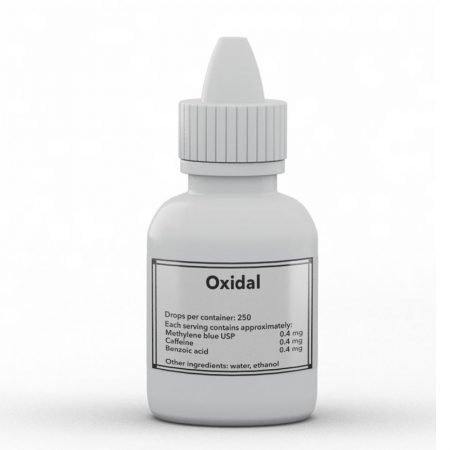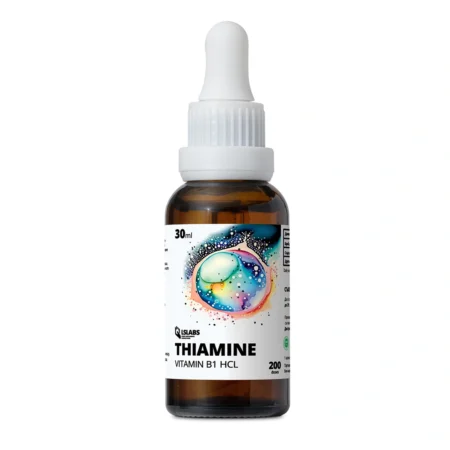Това е страхотно проучване на много нива. Първо, то директно показва, че хроничният стрес води до митохондриална дисфункция и намалено окислително фосфорилиране. Второ, то доказва, че глюкокортикоидите (кортизол) са пряка причина за това понижаване на производството на енергия. Трето, той демонстрира пряк паралел между животинските модели и човешките настроения/психични разстройства, като сравнява промените в митохондриалната функция при стресирани/тревожни/панически гризачи с промените при хора с тревожни/панически разстройства. Това почти перфектно съвпадение между предизвиканата от стрес митохондриална дисфункция при гризачите и митохондриалната дисфункция, наблюдавана при хората, излива студена вода върху ентусиазираната защитна реакция на медицинската индустрия, че „мишките/плъховете не са хора, така че не можем да правим заключения“ (разбирайте: когато не ни харесва това, което показва дадено проучване, винаги можем да твърдим, че тъй като то е проведено върху животни, значи не се отнася за хората). По-важното е, че проучването директно показва, че тревожните/паническите разстройства при хората също са предизвикани от хроничен стрес. Това изобщо не е изненадващо и всъщност е мълчаливо признато от медицинската индустрия по един изключително хитър начин, както описах в тази моя публикация по-долу. Макар че това признание на медицината се отнася само за депресията, сега можем да добавим към списъка и тревожните и паническите разстройства. Впрочем, повечето хора с депресия се борят и с тревожно/паническо разстройство и обратно, така че връзката е напълно логична… освен за психиатъра ви, разбира се:-)
https://xenobg.com/golyama-chast-90-ot-sluchaite-na-depresia-se-dalzhat-na-stres/
Продължаваме напред. Четвърто, проучването показва, че хроничният стрес води до подчинено поведение, освен че предизвиква психични разстройства, а това подчинено поведение е свързано с намалено оксидативно фосфорилиране. Какво друго води до подчинено поведение? Досещате се – серотонин. Хм, чудя се какво се случва със серотонина, когато сме под стрес и/или приемаме лекарства от групата на SSRI… Да, достатъчно е да се каже, че серотонинергичните лекарства наистина са мократа мечта на всяка фашистка държава – те са най-прекият начин за производство на послушни, зомбирани роби. Пето, това дава просто и интуитивно обяснение на психичните разстройства като (не)адаптивна понижена регулация на производството на енергия в мозъка в опит да се запазят енергийните ресурси в условията на неизбежен стрес (научена безпомощност). И накрая, проучването показва и ролята на естрогена в предизвиканите от стреса енергийни промени, като по този начин още веднъж потвърждава ролята на естрогена като медиатор на стреса в същата степен, в която е „полов“ хормон. Излишно е да казвам, че изследването предизвиква много „спорове“ в основните медии (вж: PR агенциите, наети от медицинската индустрия, се надпреварват да подготвят отговори за това как „всичко е в гените ви“), но котката бавно излиза от торбата. Както казват китайците, „злото, което се прави тайно, има начин да стане известно“.
Е, в светлината на тази ужасна новина, какво да прави човек? Както показва второто проучване от списъка по-долу, добавката ниацинамид спасява както тревожността, така и подчиненото (робското) поведение, причинено от хроничен стрес. Дизайнът на изследването може да бъде възпроизведен с човешка доза от около 50 mg, а защитните ефекти на ниацинамида се дължат на повишаване на нивата на NAD и ATP в мозъка. Като се има предвид бързото превръщане в NAD на тази сравнително ниска доза ниацинамид, може да се наложи 50 mg да се приемат няколко пъти дневно или при преживяване на стресово събитие. Друг подход би бил да се приема по-висока доза в диапазона 300mg-500mg, за която е доказано, че поддържа повишени нива на NAD за повече от 24 часа.
https://www.ncbi.nlm.nih.gov/pmc/articles/PMC4289944
https://www.ncbi.nlm.nih.gov/pubmed/26621716
https://www.eneuro.org/content/5/4/ENEURO.0166-18.2018
https://journals.plos.org/plosgenetics/article?id=10.1371/journal.pgen.1008358
“…The target genes within the beta-estradiol cluster were predicted to be significantly downregulated (PFDR = 0.015) in the D2 resilient mice in comparison to the controls on the transcriptome level. On the proteome level, the same genes within the beta-estradiol cluster were significantly downregulated in the B6 resilient mice in comparison to the B6 controls (PFDR = 0.015)…Thus, as previously shown [32], some stress-associated DE genes may be under the regulation of hormones.”
“…In an outbred strain rat model of social behavior, highly anxious rats that were prone to become subordinate during a social encounter with a rat with low levels of anxiety had lower levels of mitochondrial complex I and II proteins in the nucleus accumbens [48]. In a study that specifically investigated gene expression of mtDNA-encoded genes [49], four of these genes (mt-Nd1, mt-Nd3, mt-Nd6, and mt-Atp6) were downregulated after acute immobilization stress in the hippocampus. However, after chronic immobilization stress mt-Nd6 was upregulated. These effects were mediated by glucocorticoids.”
“…Additionally, D2 resilient mice with higher social interaction ratios also had an elevated latency to immobility in the FST, suggesting resistance to behavioral despair or lack of adaptation aimed at energy conservation in the face of inescapable situation.”
“…On the pathway level, oxidative phosphorylation-related genes were differentially expressed both in the mouse BNST and blood cells, and in the panic disorder patient blood cells. These genes were upregulated in the defeated B6 and downregulated in the defeated D2 mice compared to controls both in the BNST and blood cells. Strikingly, this pathway was downregulated in panic disorder patients directly and 24 h after an exposure-induced panic attack. It is interesting that the gene expression pattern of the patients resembles that of the more stress-susceptible mouse strain, suggesting that stress-susceptibility may involve a general modulation of genes associated with mitochondrial function.”
https://www.medicalnewstoday.com/articles/326465.php
“…After the CSDS test, the animals displayed significant changes in gene expression and protein levels in a brain region called the bed nucleus of the stria terminalis (BNST). The BNST is in the forebrain, and researchers are increasingly linking it to stress-related mental health conditions. These changes had a particularly prominent association with mitochondria. These small structures — that scientists refer to as the cell’s powerhouses — are present in the majority of our cells and responsible for energy production. Strikingly, in the stress susceptible D2 mouse strain, several genes related to mitochondrial functions were expressed at lower levels, while in the stress resilient B6 mouse strain, these were expressed at higher levels.”
“…For the second part of their study, Hovatta and her colleagues worked with 21 volunteers — 6 men and 15 women — who attended the anxiety disorder outpatient unit at the Max Planck Institute of Psychiatry in Munich, Germany. Each participant had a diagnosis of panic disorder, and none took medication for the condition. The team exposed each study participant to the trigger that causes them to experience a panic attack. During the experiment, the researchers collected blood samples prior to, as well as 1 hour and 24 hours after exposure. When they analyzed gene expression in the cells present in the volunteers’ blood, they also saw changes in genes they associated with mitochondria. The changes in gene expression most closely resembled the pattern seen in the D2 mice exposed to CSDS, with several mitochondrial genes expressed at lower levels. “Thus, although we found opposite gene expression patterns in the two mouse strains, the pattern of the highly stress susceptible mouse strain resembled that of panic disorder patients,” the authors comment in the paper. Based on their results, the team thinks this indicates that reduced expression of several key mitochondrial genes could lead to changes in cellular energy metabolism in mice and people who experience stress-induced anxiety.”
Източник:
- Колко пресни портокала са ви необходими, за да изчистите черния си дроб от мазнини?Ако имате омазнен черен дроб, включването на пресни портокали в диетата ви може да ви помогне да възстановите здравето на черния си дроб. Това става ясно от малко италианско проучване. Италиански биохимици, свързани с Националния институт по гастроентерология – IRCCS Saverio de Bellis, набират 62 души с метаболитна дисфункция, свързана със стеатозна болест на черния… Колко пресни портокала са ви необходими, за да изчистите черния си дроб от мазнини? weiterlesen
- Хроничният стрес понижава допамина и причинява психични заболяванияДоказателствата за ролята на хроничния стрес в почти всички здравословни състояния, за които лекарите имат наименование, продължават да се трупат. За съжаление, дори в това последно проучване учените продължават да настояват, че има някаква мистериозна и неизмерима разлика между хроничния стрес, който „увеличава риска“ и „причинява“ патология. Същите тези учени обаче нямат проблем да заявят… Хроничният стрес понижава допамина и причинява психични заболявания weiterlesen
- Естрогенът и кортизолът, а не андрогените, потискат имунитетаВ биологията на възпроизводството има една много известна теория, която все още се смята за доминираща в тази област. А именно, че мъжете трябва да приемат баланса между нивата на андрогените и имунитета. Тя е известна като хипотеза за увреждане на имунната компетентност (ICHH). По-високите нива на андрогените, според теорията, позволяват на мъжкия да н(физически)… Естрогенът и кортизолът, а не андрогените, потискат имунитета weiterlesen
- Инхибирането на ароматазата (за намаляване на естрогена) може да доведе до лечение на рак на стомаха.Още едно проучване, което доказва причинно-следствената връзка между естрогена и рак, смятан за хормононезависим. Ракът на стомаха е една от водещите причини за смърт от рак в световен мащаб и особено в азиатските страни. Счита се, че е много труден за лечение и повечето пациенти се диагностицират в стадии, в които операцията не е подходяща.… Инхибирането на ароматазата (за намаляване на естрогена) може да доведе до лечение на рак на стомаха. weiterlesen
- Потиснатият имунитет, а не вирусите (HPV), може да е причина за рака на кожатаНаскоро публикувах няколко теми, свързани с имуносупресията и рака. Ето две от тях, които дават добър преглед и свързват имуносупресивните ефекти на ПНМК, естрогена и кортизола със защитните ефекти на витамин А, Е, D, прогестерона и др. https://xenobg.com/pnmk-sa-imunosupresivni-a-gladuvaneto-i-ogranichavaneto-na-proteinite-veroyatno-nanasyat-oshte-po-golyama-vreda/ https://xenobg.com/vitamin-d-mozhe-da-spre-rastezha-na-melanoma/ Въпреки натрупващите се доказателства, че именно потиснатата имунна система позволява на рака да се образува и… Потиснатият имунитет, а не вирусите (HPV), може да е причина за рака на кожата weiterlesen
- Витамин К може да лекува левкемияОще едно чудесно проучване, което демонстрира както терапевтичния потенциал на витамините, така и метаболитния/редокс характер на рака. Както споменах в някои от моите подкасти, витамин К2 (MK-4) понастоящем е в процес на клинични изпитвания за лечение/предотвратяване на редица различни видове рак, особено рак на черния дроб и т.нар. миелодиспластични състояния, които обхващат всички видове рак… Витамин К може да лекува левкемия weiterlesen
- Витамин D може да спре растежа на меланомаСтрахотно проучване, което потвърждава неотдавнашната ми публикация за това, че избягването на слънчевата светлина е толкова вредно за здравето, колкото пушенето на кутия цигари на ден. В края на краищата, без слънчева светлина няма да има голям синтез на витамин D, а допълнителният прием не е ефективен за много хора поради различни фактори, включително наднормено… Витамин D може да спре растежа на меланома weiterlesen
- Повишеният синтез на мастни киселини (FAS) е просто признак за недостиг на кислород / нисък метаболизъмСамо една бърза публикация за проучване, което дава представа за това как повишеното окисление на мастните киселини може „парадоксално“ да доведе и до повишен синтез на мастни киселини, като по този начин води до порочен кръг, който най-често се наблюдава при диабет и рак. В една от последните ми публикации се обсъждаше много по-ново проучване,… Повишеният синтез на мастни киселини (FAS) е просто признак за недостиг на кислород / нисък метаболизъм weiterlesen
- ПНМК са имуносупресивни, а гладуването и ограничаването на протеините (вероятно) нанасят още по-голяма вредаКакто споменах в един от първите подкасти с Дани Роди, ролята на ПНМК като имуносупресори всъщност е добре позната в индустрията за трансплантации на органи. В някакъв момент през 80-те години на миналия век дори е имало търговски продукт на основата на ПНМК, продаван на болниците като част от така нареченото решение за „пълно парентерално… ПНМК са имуносупресивни, а гладуването и ограничаването на протеините (вероятно) нанасят още по-голяма вреда weiterlesen
- Хората имат подобна на саламандър способност да възстановяват хрущялиЗаглавието говори само за себе си, но авторите на проучването правят злощастното и неудачно заключение, че макар и да можем да възстановим хрущяла, не можем да възстановим крайниците си. Е, многобройните изследвания върху животни, които публикувах в последния материал, не са съгласни с това и сочат както високия метаболизъм, така и прогестерона като мощни регенеративни… Хората имат подобна на саламандър способност да възстановяват хрущяли weiterlesen










